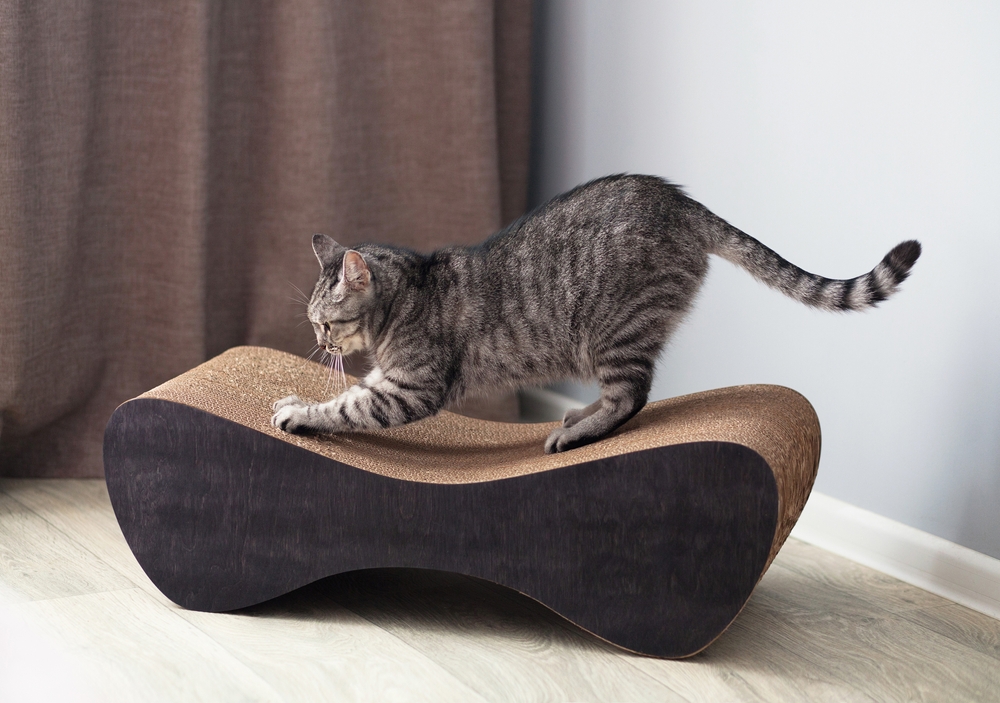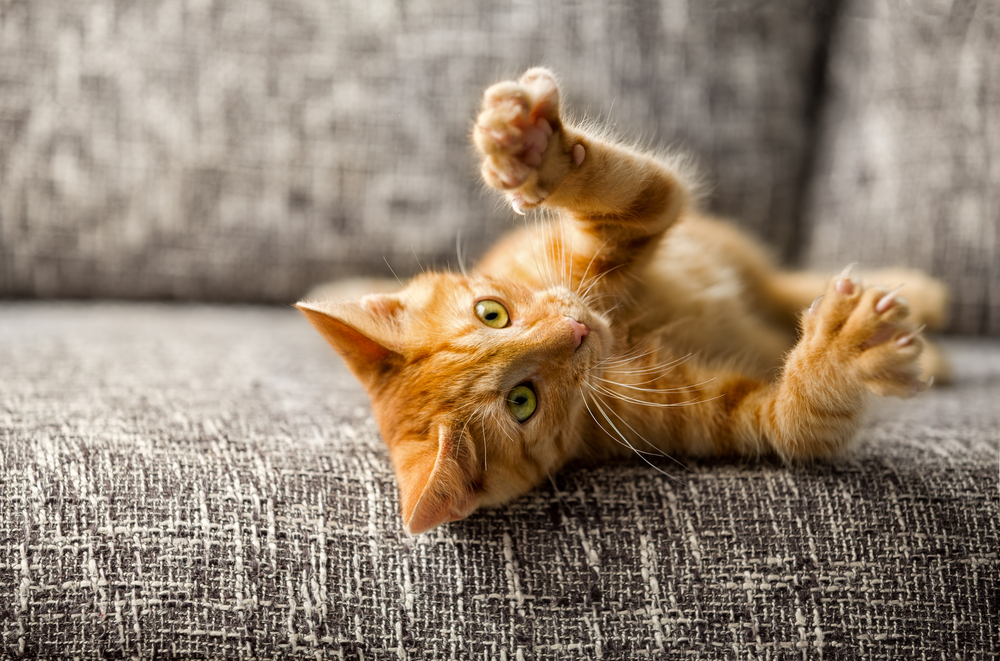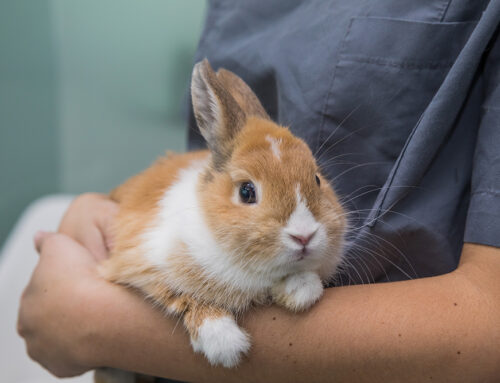Scratching is a natural behavior for cats that can lead to shredded furniture and drapes. While some cat owners consider declawing to prevent the behavior, evidence suggests these procedures can cause long-term problems. Our Parker Center Animal Clinic team wants to offer information about declawing and to provide alternative procedures to help you live peacefully with your cat without removing their claws.
Scratching is natural for cats
Scratching is a primal instinct for cats, who scratch for various reasons, including:
- Remove old nail growth — Scratching loosens and removes the claw’s outer husk, removing old nail growth, and revealing a sharp new surface.
- Exercise — Cats typically scratch surfaces that are fixed and non-yielding as a way to exercise and stretch their forelimbs and spine muscles.
- Communication — Cats have scent and sweat glands between the pads on their feet, and scratching deposits their unique scent to leave a message for other cats.
- Anxiety relief — Many indoor cats scratch to help relieve anxiety and boredom.
Cat declawing is an amputation procedure
Declawing involves surgically amputating the cat’s third phalanges (i.e., toe bones) and the attached claws, which is equivalent to cutting off a person’s fingers or toes at the top joint. Most often the procedure is performed on only the front paws, but in some cases, all four paws are declawed. Cats who undergo these procedures can experience complications, such as:
- Chronic pain — Declawed cats shift their weight to the central foot pad to relieve pressure on their toes. This altered gait stresses the limbs and spine, and frequently leads to arthritic changes in multiple joints.
- Stress — Declawed cats are prone to stress because they can’t perform a natural instinct. This can lead to health issues and behavioral problems.
- Behavioral problems — Chronic pain and stress can cause behavioral problems, such as urinating outside the litter box, aggression, or avoiding interaction, in declawed cats.
- Injury — Most declawed cats are kept indoors, but cats are wiley, and can easily escape. Declawed cats don’t have claws to defend themselves and are at higher risk if attacked by another cat or predator.
Alternatives to cat declawing
Many professional associations, such as the American Veterinary Medical Association (AVMA) and the American Association of Feline Practitioners (AAFP), discourage declawing, but you have options to prevent your cat from shredding your furniture. Cat declawing alternatives include:
- Keeping your cat’s nails trimmed — When your cat’s nails get too long, they are more likely to damage your belongings. In addition, if left unmanaged, they can become ingrown and cause severe pain that requires veterinary attention. Trim your cat’s nails every one to two weeks to keep them at an acceptable length. Some cats will resist this procedure, but treats are a good motivator to accomplish the task. Use your thumb and forefinger to extend the claw, and carefully snip off the sharp tip, avoiding the pink area close to the cat’s paw. You may need to have several sessions to trim all your cat’s claws, because they may get impatient after you’ve trimmed two or three. Try to keep the experience positive, and reward them with praise and treats after each session.
- Providing appropriate scratching surfaces — You won’t be able to stop your cat from scratching, so provide appropriate scratching areas. Factors to consider include:
- Number — Ensure every cat in your household has at least one scratching post.
- Location — Scratching posts should be placed in socially significant areas, such as your living room, which allows your cat to claim these active areas by leaving their scent.
- Orientation — Most cats have a scratching preference. If your cat is destroying your carpet, they are likely a horizontal scratcher, whereas if they shred your curtains, they are likely a vertical scratcher. Provide options so your cat can appease their scratching desires.
- Material — Provide different materials, such as sisal rope, cardboard, and carpet, to learn your cat’s material preferences.
- Attractiveness — When introducing a new scratcher, make the surface more appealing to your cat with catnip or feline pheromones.

- Training your cat — Use positive reinforcement training, preferably starting when your cat is young, to teach your cat to scratch appropriate surfaces. Provide treats and interactive play when they scratch their scratching posts.
- Discouraging inappropriate scratching — Use furniture covers or sticky tape to deter your cat from scratching. You can also place foil or a spiky mat where your cat frequently inappropriately stands to scratch to discourage the behavior.
- Using nail caps — Nail caps are vinyl caps that are placed on your cat’s nails to prevent destructive scratching without hindering your cat’s movement. These caps are easy to apply and most last for about four weeks.
- Providing enrichment — Cats need mental and physical exercise to prevent boredom, and providing appropriate enrichment can distract your cat from destructive scratching.
- Adopting a declawed cat — If you are considering adopting a cat and are concerned about destructive scratching behavior, ask your local shelter about declawed cats who need a home.
These declawing alternatives should help you live peacefully with your clawed cat. If your feline friend gets frisky when you try to trim their nails, contact our Cat Friendly team at Parker Center Animal Clinic, so we can help preserve your carpet and furniture, and your cat can keep their claws.






